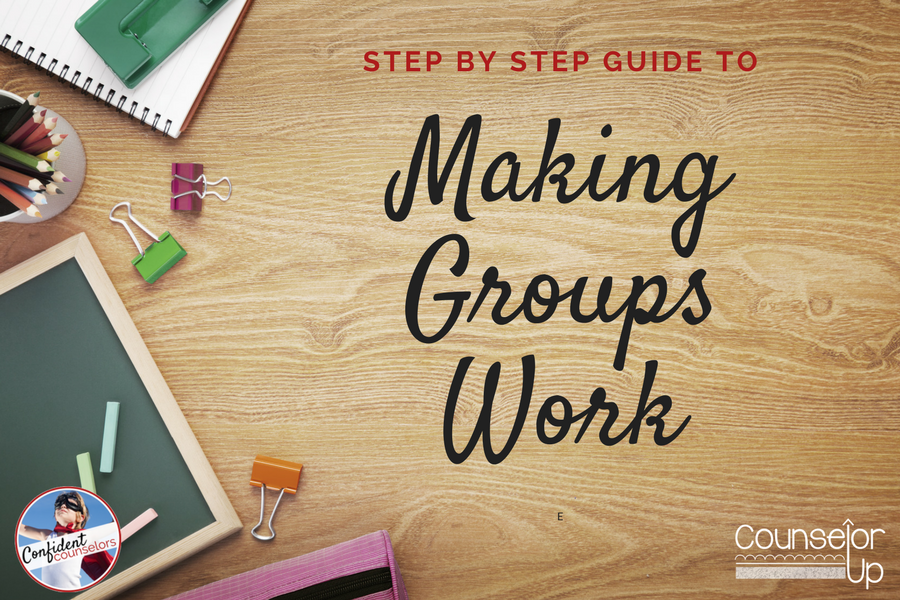Groups. Do you love them or hate them? I remember in grad school learning about group theory, the ideal selection process, and writing lesson plans for 12 45-minute sessions. When I started at my first school and saw the reality – way more kids than time, 20 minute lunch groups (while eating), and kids who struggle to even participate. I used to hate groups. Then I got myself together and decided to own my groups instead of the other way around.
Make a Plan
Know the groups that you will plan on the first day of school. Yes, you heard that right. But what about needs assessments and groups that “come up” during the year, I hear you say. If we are using data to determine the needs in the building and are communicating with classroom teachers throughout the school year, we can make a plan before the year even starts. And guess what? That means the groups might actually happen (go ahead and cheer).
To give you an idea, here are the groups that I typically ran:
- Fall Groups
- Sept-Oct:
- Resiliency – target group: students with 15 or more absences in the previous year
- K-1 Recess Club – target group: students who lost free choice at recess because of behavior
- Oct. – Dec:
- The Girls Book Club – target group: 3rd – 5th girls with high number of counselor referrals for friendship issues
- 3-5 Social Skills – target group: 3rd -5th grade students by teacher and parent referral
- Sept-Oct:
- Winter Groups
- Jan-Mar:
- Academic Achievement – target group: 3rd-5th grade students who did not pass the state mandated test in the previous year OR who were proficient but had low work habits scores on report card
- Jan-Mar:
- Spring Groups:
- Mar-May:
- Small Fry Friendship Group – target group: K-2 students with behavior referrals for (not) managing their strong emotions or social skill concerns
- Girls Rock & Superhero Kids – target group: 2-4th students by teacher and parent referral for self-esteem
- Middle School Readiness – target group: needs assessment following middle school lessons and middle school lunch bunch session
- Mar-May:
This plan pretty much covered our needs as a school. I knew exactly what I was going to offer, how I was going to determine the students who participated, and a rough estimate of when they would occur. You probably noticed that I started groups in waves. Each wave of groups began on the same week and groups went as long as needed until they were done. Here’s what a week looked like:

Some groups met more than once per week and others met one time. This chart shows you a typical week of lunch groups. I might have also had some K-2 groups in other times of the day. I try really hard to not do K-2 at lunch because younger kids can’t really eat and group at the same time.
Once groups started, I used a drawer system like *THIS* and kept all the material for each group in one drawer. If two groups were on the same topic, they still had different drawers. That way, I can pull the drawer out and have everything I need but not more.
Surprise!
So what do you do when a genuine need for a group becomes apparent after your best-laid plans? You run it of course! Hopefully, with your calendar organized and ready, you will easily be able to see where you can fit an additional group in. (Pro-tip: Schedule your groups before you allow teachers to sign up for lessons so you can have consistent group times.)
So how do you make groups work? What’s your go-to way to make it happen? Or your sticking point where everything falls apart?




A very helpful guide for group planning. Thank you @CounselorUp!!
is there supposed to be a link to a drawer system? Would like more info on this
Yes Kristy! Thanks – fixing now.